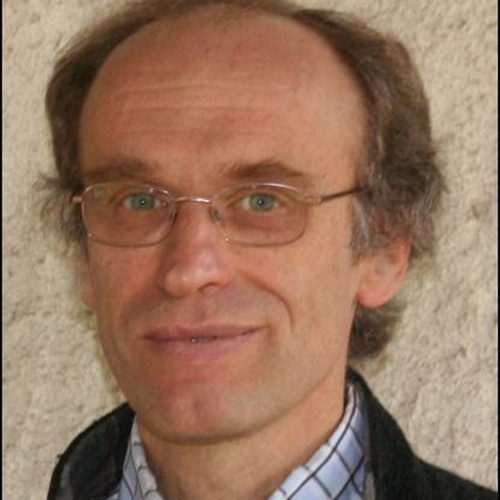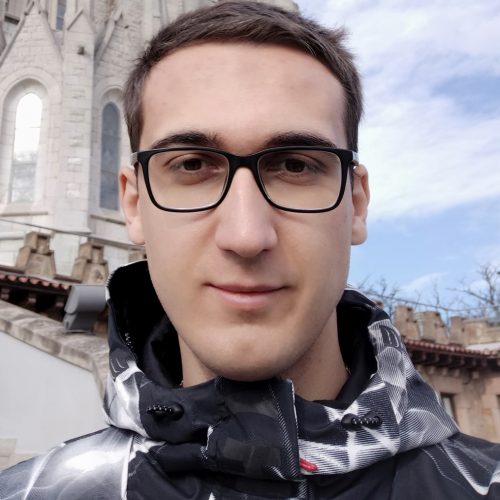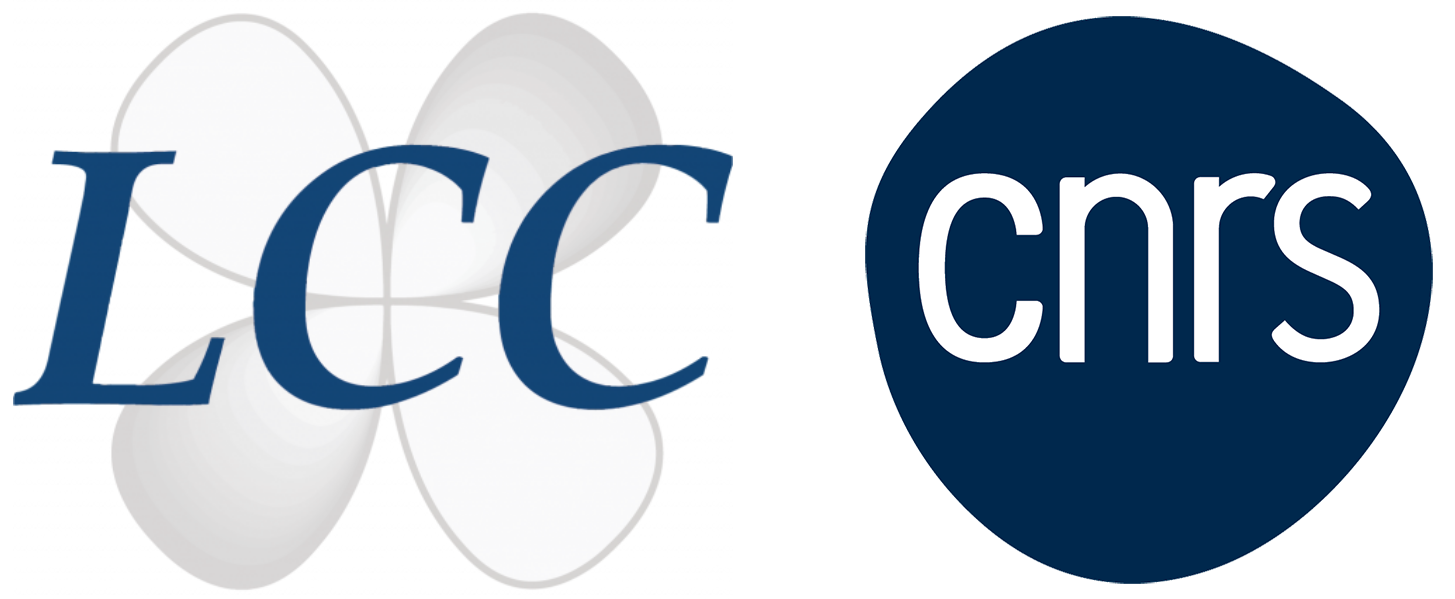LCC
Activités de l’équipe
La synthèse et la caractérisation de nouveaux matériaux moléculaires photoactifs sont au cœur des travaux de l’équipe. Les complexes de ruthénium à ligand nitrosyle, du fait de leur large gamme de propriétés physico-chimiques, concentrent une large partie de notre activité.
La prédiction de ces propriétés sur le plan théorique permet en outre de guider efficacement les expérimentateurs vers les meilleures cibles synthétiques. L’obtention d’agrégats nanométriques de ces objets moléculaires fait également partie des stratégies de l’équipe.
L’intérêt que nous portons à ces systèmes réside dans leur photoréactivité qui permet d’envisager des applications en thérapie photodynamique ou bien en stockage optique de l’information.
Membres de l’équipe

MALFANT Isabelle

BALTAS Michel

BENYAHIA Massyl

DE BONNEVAL Benedicte

DE CARO Dominique

GAMEZ-LARA Astrid-Mariana

HU Yingying

LACROIX Pascal

MUDRAK Vladyslav

SU Hang

TASSE Marine

TEBBI Nour
Aucun résultat trouvé
Thèmes de recherche
Photo-libération de NO dans des complexes nitrosyle du ruthénium / nano-objets
Le monoxyde d’azote (NO) est maintenant reconnu pour ses implications dans de nombreux mécanismes biologiques permettant entre autre de lutter contre le cancer, les bactéries…
Isomérisation photo-induite dans des complexes nitrosyle du ruthénium Commutation Ru-NO / Ru-ON
L’obtention de matériaux avec un atome ou une molécule pouvant être commuté en deux états bien distincts, peut engendrer des capacités de stockage comparables à celles de la molécule d’ADN, soit de l’ordre du térabyte/cm3.
Applications dans le domaine de la santé
Devant les difficultés rencontrées par les antibiotiques usuels pour traiter certaines infections et particulièrement celles dues aux biofilms, il est urgent de développer de nouvelles thérapies qui permettraient de lutter contre la résistance antimicrobienne.
Actualités de l’équipe
Infuzide : une nouvelle molécule prometteuse contre les bactéries multirésistantes
Publié dans American Society of Microbiology par M. Baltas et al.
La Lawsone à l’honneur dans l’ACS Molecule of the Week
Une étude du LCC (Michel Baltas, Anne Robert et al.) et de l’Université de Tartu (Estonie) citée dans ‘ACS Molecule of the Week’ (molécule de la semaine de l’ACS)
Les échappées inattendues du CNRS avec Yue Xiao
« Résistance aux antimicrobiens : nouvelle stratégie lumineuse » par Yue Xiao, chimiste-microbiologiste, doctorante au sein de l’équipe R du LCC
Publications
2025
Comprehensive biological evaluation of infuzide as a potent antimicrobial, alone and in combination with gentamicin, linezolid, and minocycline targeting MDR Staphylococcus aureus and Enterococcus sp
Maitra R., Saxena D., Akhir A., Kapusterynska A., Baltas M., Chopra S.
Microbiol. Spectrum 2025, 13(7), e00279-25/1-19.
10.1128/spectrum.00279-25 – hal-05098906
Photo-release of acetonitrile in ruthenium(II) complexes with various substituted terpyridine ligands
Mudrak V., Lacroix P. G., Labra-Vázquez P., Tassé M., Mallet-Ladeira S., Malfant I.
Dalton Trans. 2025, 54(22), 9021-9031.
10.1039/D5DT00734H – hal-05093703
Mechanochemistry to form substituted imidazoles, imidazolium salts and NHC–Gold complexes with fluorine-containing groups
Salis C., Mohammedi S., Turazza L., Blandin Y., Garnier M., Hemmert C., Baltas M., Gornitzka H.
Molecules 2025, 30(3), 522/1-16.
10.3390/molecules30030522 – hal-04931989
2024
Mechanochemical cleavage of wheat lignin into a more homogeneous fraction
Cachet N., Lavedan P., Baltas M., Benjelloun-Mlayah B.
Industrial Crops and Products 2024, 221, 119321/1-13.
https://doi.org/10.1016/j.indcrop.2024.119321
https://hal.science/hal-04693246
Photorelease of nitric oxide from Pluronic F127/chitosan hydrogels incorporating a water soluble ruthenium nitrosyl complex
Gzam H., Katar D., Tassé M., Xiao Y., Malfant I., Fitremann J., Vicendo P., Mingotaud A.-F., de Caro D.
New Journal of Chemistry 2024, 48(18), 8343-8351.
http://dx.doi.org/10.1039/D4NJ00724G
https://hal.science/hal-04668795
Photorelease of nitric oxide (NO) in mono- and bimetallic ruthenium nitrosyl complexes: A photokinetic investigation with a two-step model
Juarez-Martinez Y., Labra-Vázquez P., Lacroix P. G., Tassé M., Mallet-Ladeira S., Pimienta V., Malfant I.
Inorganic Chemistry 2024, 63(17), 7665-7677.
https://doi.org/10.1021/acs.inorgchem.3c04496
https://hal.science/hal-04666484
Fused double oxazolidine vs Imine ligands and Zn-complexes formation: Experimental and theoretical calculations
Sánchez-Portillo P., Morales-Morales D., Grévy J. M., Lacroix P. G., Flores V. E. G., Barba V.
Journal of Molecular Structure 2024, 1310, 138306/1-11.
https://doi.org/10.1016/j.molstruc.2024.138306
https://hal.science/hal-04590913
Ruthenium nitrosyl complexes with NO release capability: the use of fluorene as an antenna
Mudrak V., Lacroix P. G., Tassé M., Mallet-Ladeira S., Roshal A. D., Malfant I.
Dalton Transactions 2024, 53(23), 9777-9791.
http://dx.doi.org/10.1039/D4DT01154F
https://hal.science/hal-04580926
2023
A Trojan horse approach for enhancing the cellular uptake of a ruthenium nitrosyl complex
Labra-Vázquez P., Rocha E., Xiao Y., Tassé M., Duhayon C., Farfán N., Santillan R., Gibot L., Lacroix P. G., Malfant I.
Dalton Transactions 2023, 52(48), 18177-18193.
http://dx.doi.org/10.1039/D3DT03480A
https://hal.science/hal-04346306
Acetylacetonate ruthenium nitrosyls: A gateway to nitric oxide release in water under near-infrared excitation by two-photon absorption
Labra-Vázquez P., Mudrak V., Tassé M., Mallet-Ladeira S., Sournia-Saquet A., Malval J.-P., Lacroix P. G., Malfant I.
Inorganic Chemistry 2023, 62(49), 20349-20363.
https://doi.org/10.1021/acs.inorgchem.3c03355
https://hal.science/hal-04284209
Crystal structures and conformational effects in bis-fluorenyl based ligands and related ruthenium nitrosyl complexes
Juarez-Martinez Y., Labra-Vázquez P., Lacroix P. G., Tassé M., Bocé M., Mallet-Ladeira S., Malfant I.
Polyhedron 2023, 246, 116690/1-10.
https://doi.org/10.1016/j.poly.2023.116690
https://hal.science/hal-04283893
First example of photorelease of nitric oxide from ruthenium nitrosyl-based nanoparticles
Farhat A., Tassé M., Bocé M., de Caro D., Malfant I., Vicendo P., Mingotaud A.-F.
Chemical Physics Letters 2023, 818, 140434/1-4.
https://doi.org/10.1016/j.cplett.2023.140434
https://hal.science/hal-04034750
2022
Two-photon absorption-based delivery of nitric oxide from ruthenium nitrosyl complexes
Lacroix P. G., Malfant I., Labra-Vázquez P., Fárfan N., Ramos-Ortiz G.
Dalton Transactions 2022, 51(39), 14833-14841.
http://dx.doi.org/10.1039/D2DT02553A
https://hal.archives-ouvertes.fr/hal-03796675
Bimetallic ruthenium nitrosyl complexes with enhanced two-photon absorption properties for nitric oxide delivery
Juarez-Martinez Y., Labra-Vázquez P., Enríquez-Cabrera A., Leon-Rojas A. F., Martínez-Bourget D., Lacroix P. G., Tassé M., Mallet-Ladeira S., Farfán N., Santillan R., Ramos-Ortiz G., Malval J.-P., Malfant I.
Chemistry – A European Journal 2022, 28(62), e202201692/1-14.
https://doi.org/10.1002/chem.202201692
https://hal.archives-ouvertes.fr/hal-03796799
2021
Bukhanko V., León-Rojas A. F., Lacroix P. G., Tassé M., Ramos-Ortiz G., Barba-Barba R. M., Farfán N., Santillan R., Malfant I.
European Journal of Inorganic Chemistry 2021, 2021(17), 1670-1684.
https://doi.org/10.1002/ejic.202100109
https://hal.archives-ouvertes.fr/hal-03228987
Characterization of charge states in conducting organic nanoparticles by X-ray photoemission spectroscopy
Fraxedas J., Vollmer A., Koch N., de Caro D., Jacob K., Faulmann C., Valade L.
Materials 2021, 14(8), 2058/1-13.
https://doi.org/10.3390/ma14082058
https://hal.archives-ouvertes.fr/hal-03219545
First nanoparticles of a conductor based on the organic donor molecule BETS: κ-(BETS)2FeCl4
Jacob K., Faulmann C., de Caro D., Valade L.
Materials 2021, 14(16), 4444/1-7.
https://doi.org/10.3390/ma14164444
https://hal.archives-ouvertes.fr/hal-03364498
Crystal structure of 1,1’-(pyridine-2,6-diyl)bis[N-(pyridin-2-ylmethyl)methanaminium] dichloride dihydrate
Merabet L., Tasse M., Mallet-Ladeira S., Kaboub L., Malfant I.
Acta Crystallographica Section E 2021, 77(12), 1296-1298.
https://doi.org/10.1107/S205698902101183X
https://hal.archives-ouvertes.fr/hal-03600453
Amplitude mode of charge density wave in TTF[Ni(dmit)2]2 observed by electronic Raman scattering
Revelli Beaumont M., Gallais Y., Sacuto A., Jacob K., Valade L., de Caro D., Faulmann C., Cazayous M.
Physical Review B 2021, 103(3), 035139/1-5.
https://doi.org/10.1103/PhysRevB.103.035139
https://hal.archives-ouvertes.fr/hal-03229054
Superconducting super-organized nanoparticles of the superconductor (BEDT-TTF)2Cu(NCS)2
de Caro D., Jacob K., Revelli-Beaumont M., Faulmann C., Valade L., Tassé M., Mallet-Ladeira S., Fan S., Kawamoto T., Mori T., Fraxedas J.
Synthetic Metals 2021, 278, 116844.
https://doi.org/10.1016/j.synthmet.2021.116844
https://hal.science/hal-03364488
Possible observation of the signature of the bad metal phase and its crossover to a Fermi liquid in κ-(BEDT-TTF)2Cu(NCS)2 bulk and nanoparticles by Raman scattering
Revelli Beaumont M., Hemme P., Gallais Y., Sacuto A., Jacob K., Valade L., de Caro D., Faulmann C., Cazayous M.
Journal of Physics: Condensed Matter 2021, 33(12), 125403/1-9.
http://dx.doi.org/10.1088/1361-648X/abd813
https://hal.archives-ouvertes.fr/hal-03229011
Colorimetric metal ion (II) Sensors Based on imine boronic esters functionalized with pyridine
Sánchez-Portillo P., Hernández-Sirio A., Godoy-Alcántar C., Lacroix P. G., Agarwal V., Santillán R., Barba V.
Dyes and Pigments 2021, 186, 108991/1-13.
https://doi.org/10.1016/j.dyepig.2020.108991
https://hal.archives-ouvertes.fr/hal-03108961
Partenariats
Cliquez-ici pour consulter les partenaires
Martial Boggio-Pasqua, LCPQ-IRSAMC, Université de Toulouse 3
Patricia Vicendo, Anne-Françoise Mingotaud, IMRCP, Université de Toulouse 3
Christine Roques, LGC, Université de Toulouse 3
Marie-Pierre Rols, IPBS-CNRS, Toulouse
Marylise Buron-Lecointe, IPR, Université de Rennes 1
Gabriel Ramos, CIO, Mexique
Norberto Farfán, UNAM, Mexique
Zoia Voitenko, Taras Shevchenko National University of Kyiv, Ukraine
Oleksander Roschal, Karazin University of Kharkov, Ukraine
Financements
Cliquez-ici pour consulter les financeurs
Ministère de l’Enseignement Supérieur et de la Recherche (MESR)
International Research Project (IRP) MCCM (France – Mexique)
COMUE Région Occitanie
Campus France
ANR Photochromics
ANR NOBaclight
Ministère de l’Enseignement Supérieur et de la Recherche (MESR)
International Research Project (IRP) MCCM (France – Mexique)
COMUE Région Occitanie
Campus France
ANR Photochromics
ANR NOBaclight
Ministère de l’Enseignement Supérieur et de la Recherche (MESR)
International Research Project (IRP) MCCM (France – Mexique)
COMUE Région Occitanie
Campus France
ANR Photochromics
ANR NOBaclight
LCC CNRS
Laboratoire de chimie de coordination du CNRS
205 route de Narbonne, BP 44099
31077 Toulouse cedex 4
France







